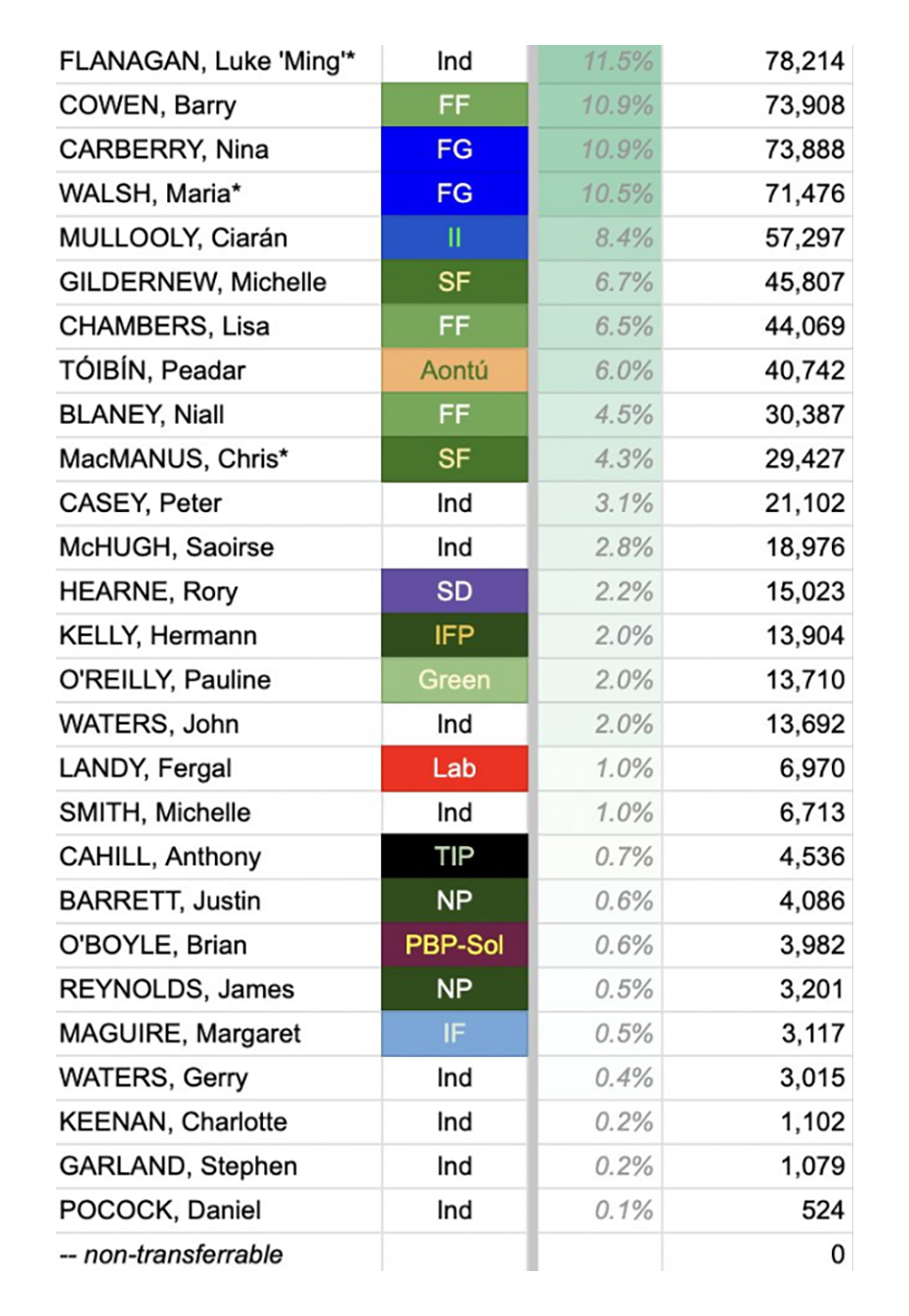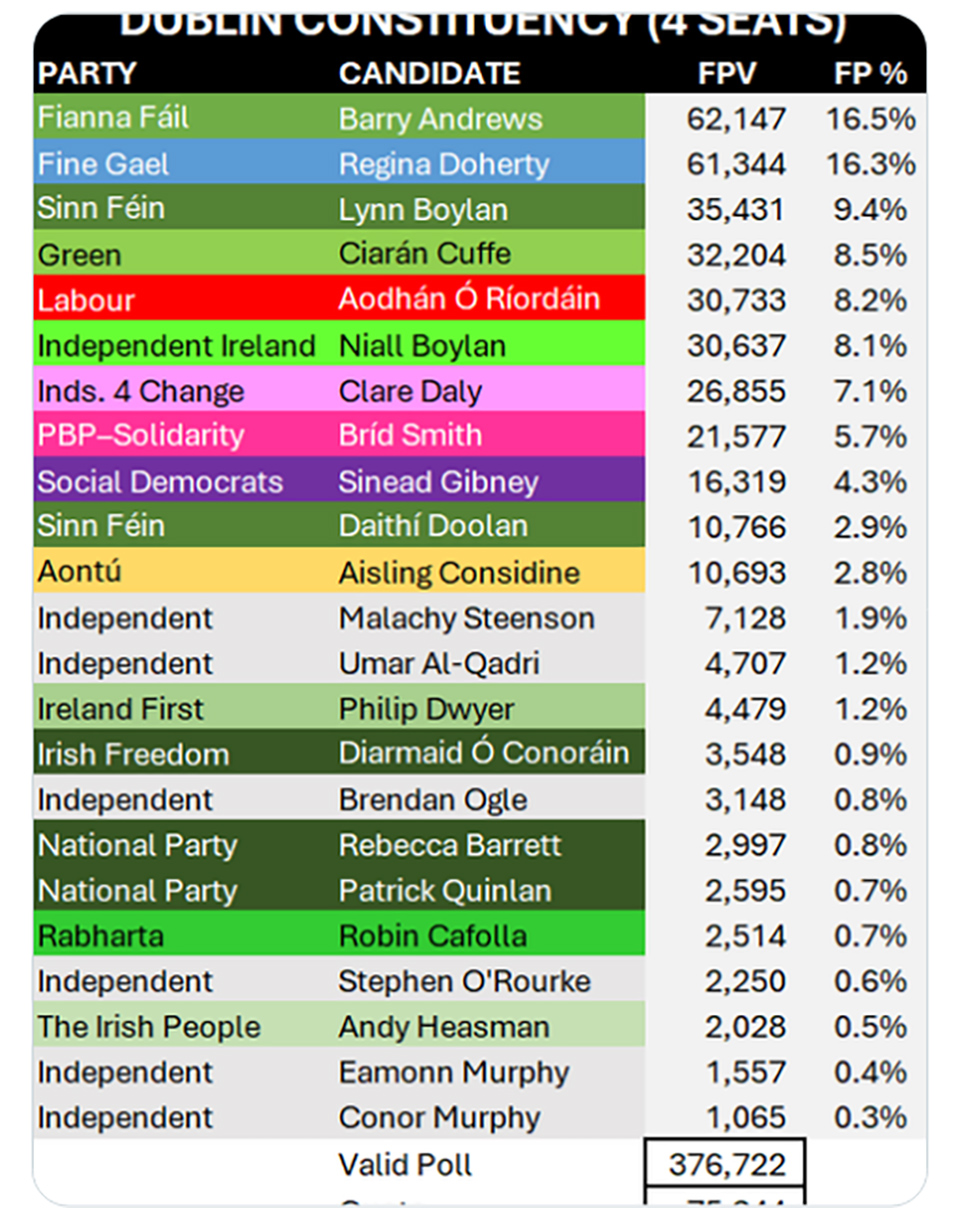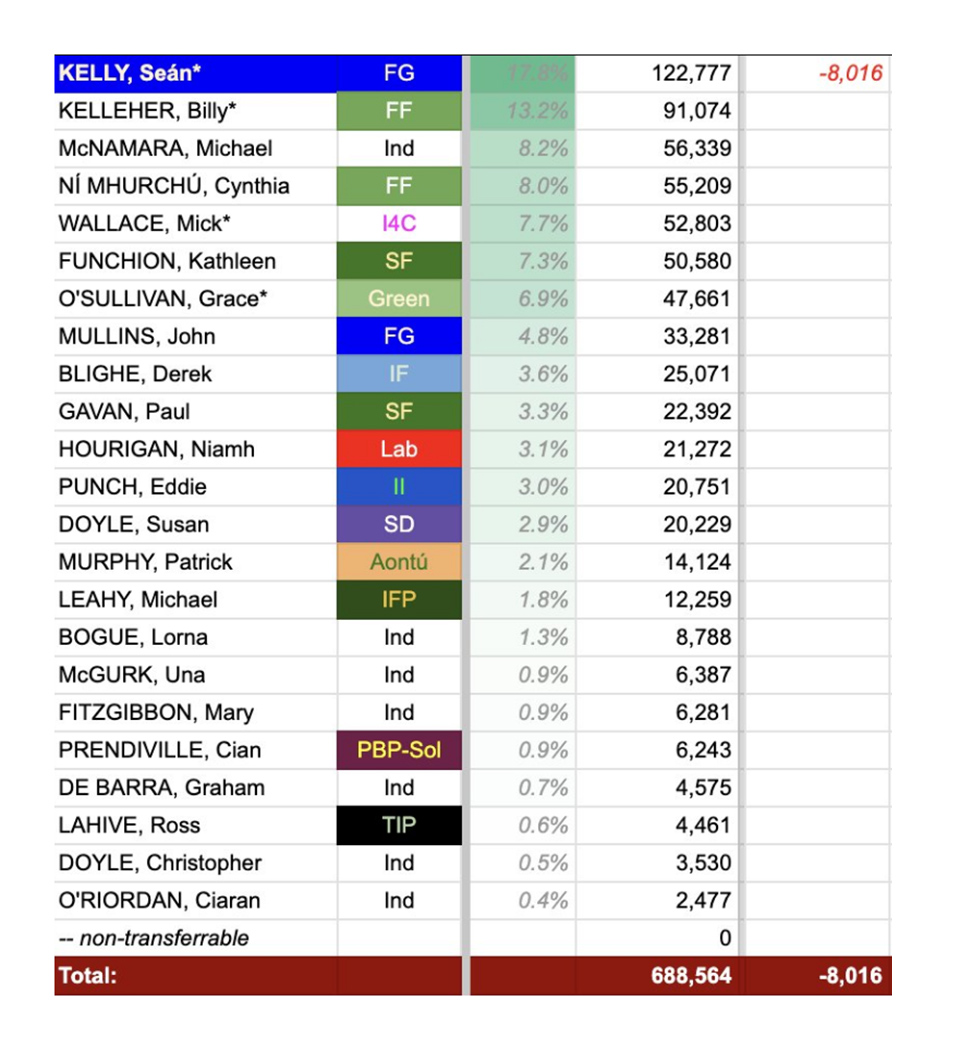Despite some of the spin being put on the local and European elections, it is clear that the attempt to create a narrative of “far right” failure is far from being accurate – especially given that the establishment parties and the media have consistently described anyone even querying immigration or any other one of their hobby horses as being ‘far right’ or ‘extreme’.
Not only was the bulk of the huge number of votes for Independent and Others last Friday cast in favour of candidates and parties critical of current immigration policies in particular, but the vote in Ireland in that regard was on the same or higher level as in other EU states.
When the overall vote for those parties and independent candidates – who in other EU states would be clearly identifiable as being on the right due to their positions on immigration, abortion, etc – is taken together, it shows that the alternative right vote in the EU elections amounted to 21.5% of the total valid poll.
That is actually higher than the 20.4% of the combined vote that went to candidates for the European Conservatives and Reformists (ECR) and Identity and Democracy (ID) across all 27 member states. However, a number of parties on the right, most notably Alternative fur Deutschland (AfD) are not affiliated to either, so the actual combined right vote was around 23-24%.
The most accurate overview of how party support broke down here is from the first counts of the three European Parliament constituencies. These differ slightly in overall % from the breakdown for the local elections, but I have chosen them for two reasons:
Firstly, that they give an indication of overall party support where each party had a candidate; and secondly that they allow a comparison to be made on a European level to the groups to which the main parties affiliate to, or in the case of the right candidates, none of whom are formally affiliated, to the sort of vote that similar parties and candidates have secured across the EU as a whole.
Comparison of party votes between 2024 and 2019
| 2024 | 2019 | |
| Fine Gael
|
20.8 | 29.6 |
| Fianna Fáil
|
20.4 | 16.6 |
| Sinn Féin
|
11.1 | 11.7 |
| Greens
|
5.4 | 11.4 |
| Labour
|
3.4 | 3.1 |
| Social Democrats
|
2.95 | 1.2 |
| People Before Profit
|
1.8 | 2.3 |
| Independents for Change
|
4.5 | 7.4 |
Although the results have been generally interpreted as a triumph for the government, in actual fact their combined vote as a share of the European election totals fell from 57.6% in 2019 to 46.6% last week. Their overall total in the 2020 general election was just over 50%, so while they certainly did well as an incumbent – and particularly at the expense of Sinn Féin as their prospective replacement – it was hardly an overwhelming endorsement.
Clearly the main factor was the shift of voters from all of the established parties to independents and others and in particular to the right parties and others who took 21.5% of the overall European vote. The total independent and other right vote in 2020 was not even 16%, of which well under half, perhaps 5%, might have been considered to be “far right” or alternative right.
Sinn Féin’s overall % fell sharply from 24.5% so they were clearly the main party to take a hit from the right. This is even a pretty meaningless distinction if you consider that so many of the right wing voters, and indeed in some cases candidates, are former supporters and even members of Sinn Féin. To make matters worse, Sinn Féin also appear to have lost out to the softer left who appeal to those former or prospective Sinn Féin voters who believe that the party has shifted “to the right” on immigration.
The breakdowns of the first counts for Midlands West, Dublin and Ireland South can be found in the following tables.
The highest combined vote for candidates on the right/with immigration concerns was in Midlands West where the total came to almost exactly 25%. The Independent Ireland candidate Ciarán Mulooly is well placed to take a seat here but that overall vote had it not been as fractured might well have been enough to have elected a second right wing candidate.
MIDLANDS NORTH WEST

DUBLIN

IRELAND SOUTH

Similarly, in Dublin the right candidates took over 18% of the vote in a constituency where the quota is 20% and where Niall Boylan of Independent Ireland will need an extremely favourable breakdown of vote transfers from the left if he is to survive and take a seat.
In the South constituency, the overall vote was comfortably over the quota at 21.5% of the total votes. Michael McNamara will probably be elected here but again, a second right seat might have been possible given less fractures and a more disciplined vote. Derek Blighe took 25,000 of the votes in this constituency, polling higher than Paul Gavan of Sinn Féin and Niamh Hourigan of Labour.
Perhaps the main conclusion to be drawn is that while the vote may be fractured, what the media have called the “far right” represent enough voters to become a significant political force, if they weren’t so splintered.
In fact, it is now forming the third main bloc of votes outside of the two main parties in government, and well ahead of Sinn Féin – whose plans to be the largest party after the next general election took a massive hit last Friday.